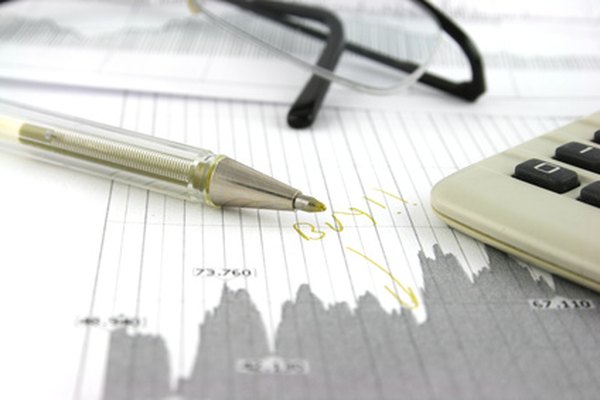What Influences the Price-to-Earnings Ratio?
Stocks with high PE ratios tend to be volatile.
stocks and shares image by Andrew Brown from Fotolia.com
The price-to-earnings ratio, often called the PE ratio, is the ratio of market price per share to annual earnings per share for a company's stock. It measures the payback period for your investment in years. The PE ratio is not particularly relevant as a standalone number, but it is useful for comparing companies in the same industry, and for determining possible entry and exit points for stocks. Current and expected earnings have the most influence on PE ratios.
Earnings
The widely reported PE ratios are usually based on the trailing 12-month earnings, which equal net income minus preferred dividends. Net income is the bottom line on the income statement, after deducting all expenses from sales. The drivers for higher earnings include a combination of increased sales from new products, new geographic markets, and cost controls. Investors form expectations about earnings based on historical results, industry data and management outlook. PE ratios are likely to remain at or near historical or industry levels for companies that can meet or modestly beat these expectations. PE ratios could contract for companies that report losses or lower-than-expected earnings as falling investor demand drives down stock prices. PE ratios could expand for companies that report unexpectedly strong earnings reports because rising investor demand drives up stock prices.
Growth
PE ratios also depend on future earnings because stock markets tend to look ahead. Smaller companies often have higher PE ratios than the industry or market averages because they typically have high sales and earnings growth rates. Certain industries have high PE ratios because investors have higher earnings growth expectations. Companies that establish new trends or develop innovative productivity solutions may have high PE ratios because investors are willing to pay a premium for potentially high earnings growth. Several financial websites publish forward PE ratios, which use published estimates from stock analysts of the earnings for the next 12 months.
Economy
Economic conditions influence PE ratios because they affect corporate earnings and financial markets. A combination of economic growth and low inflation could expand PE ratios as funds flow into stock markets in anticipation of strong earnings and dividend growth. Conversely, rising interest rates, high unemployment, and low levels of consumer and business spending usually lead to declining sales, higher operating costs, and falling earnings. These factors would drive down investor demand for stocks, which could shrink PE ratios across several companies and industries.
Considerations
In general, stocks are overvalued if they are trading substantially above their historical PE ratios or the market PE ratio; otherwise, they are undervalued. Buy-and-hold investors buy undervalued stocks and wait for the market price to catch up with the fundamentals, while momentum investors buy stocks with strong price momentum, which usually also implies high PE ratios.
References
Resources
Writer Bio
Based in Ottawa, Canada, Chirantan Basu has been writing since 1995. His work has appeared in various publications and he has performed financial editing at a Wall Street firm. Basu holds a Bachelor of Engineering from Memorial University of Newfoundland, a Master of Business Administration from the University of Ottawa and holds the Canadian Investment Manager designation from the Canadian Securities Institute.

